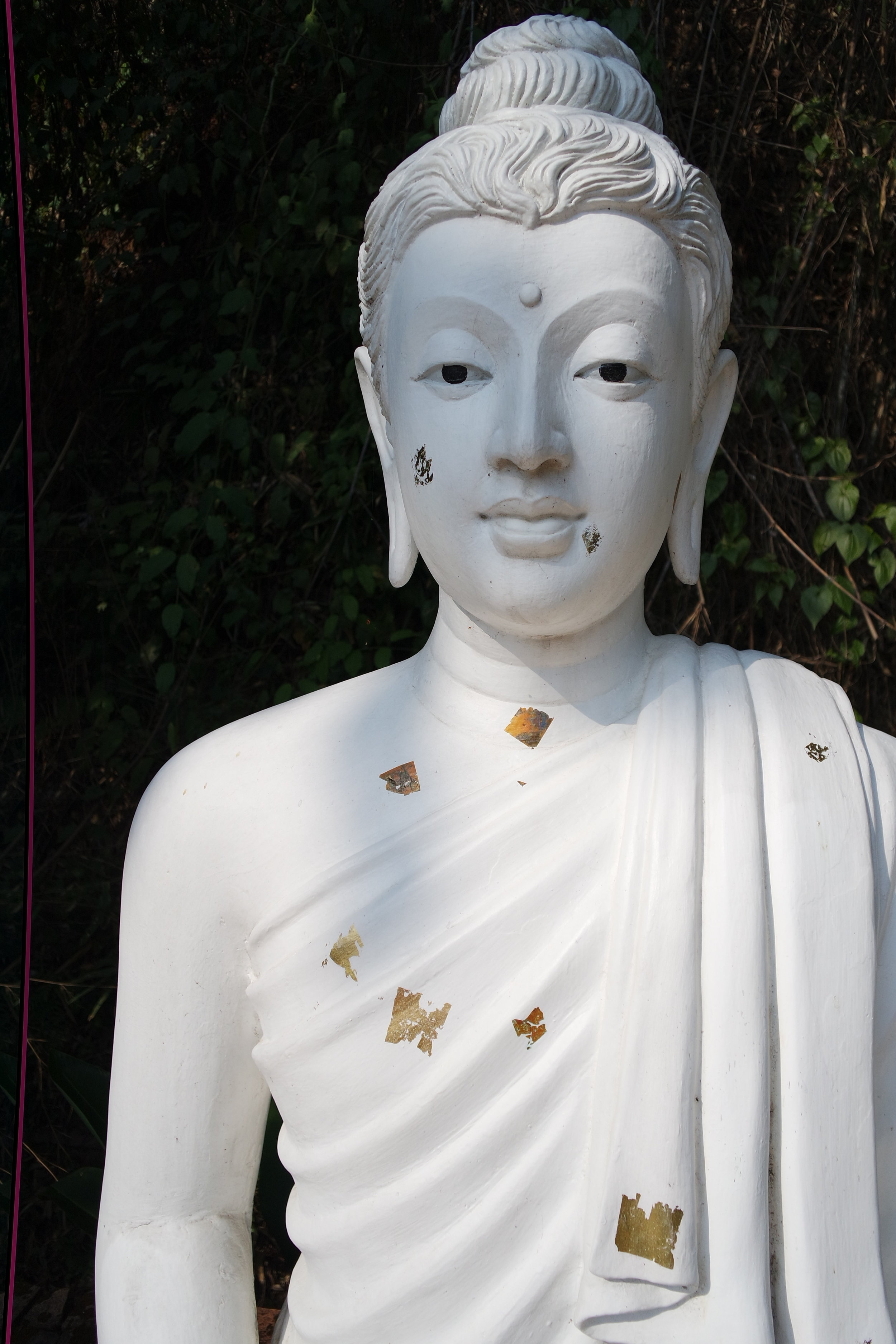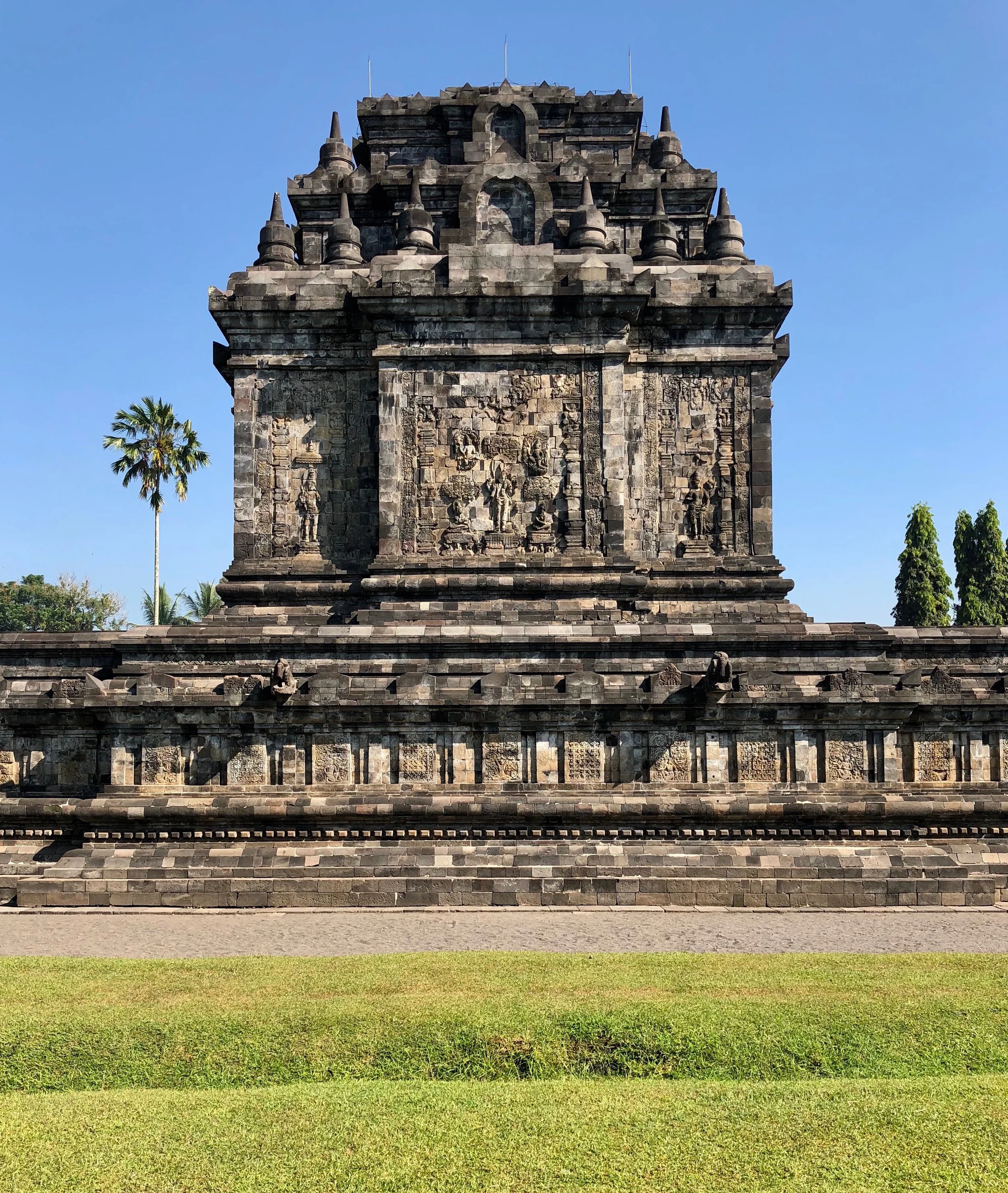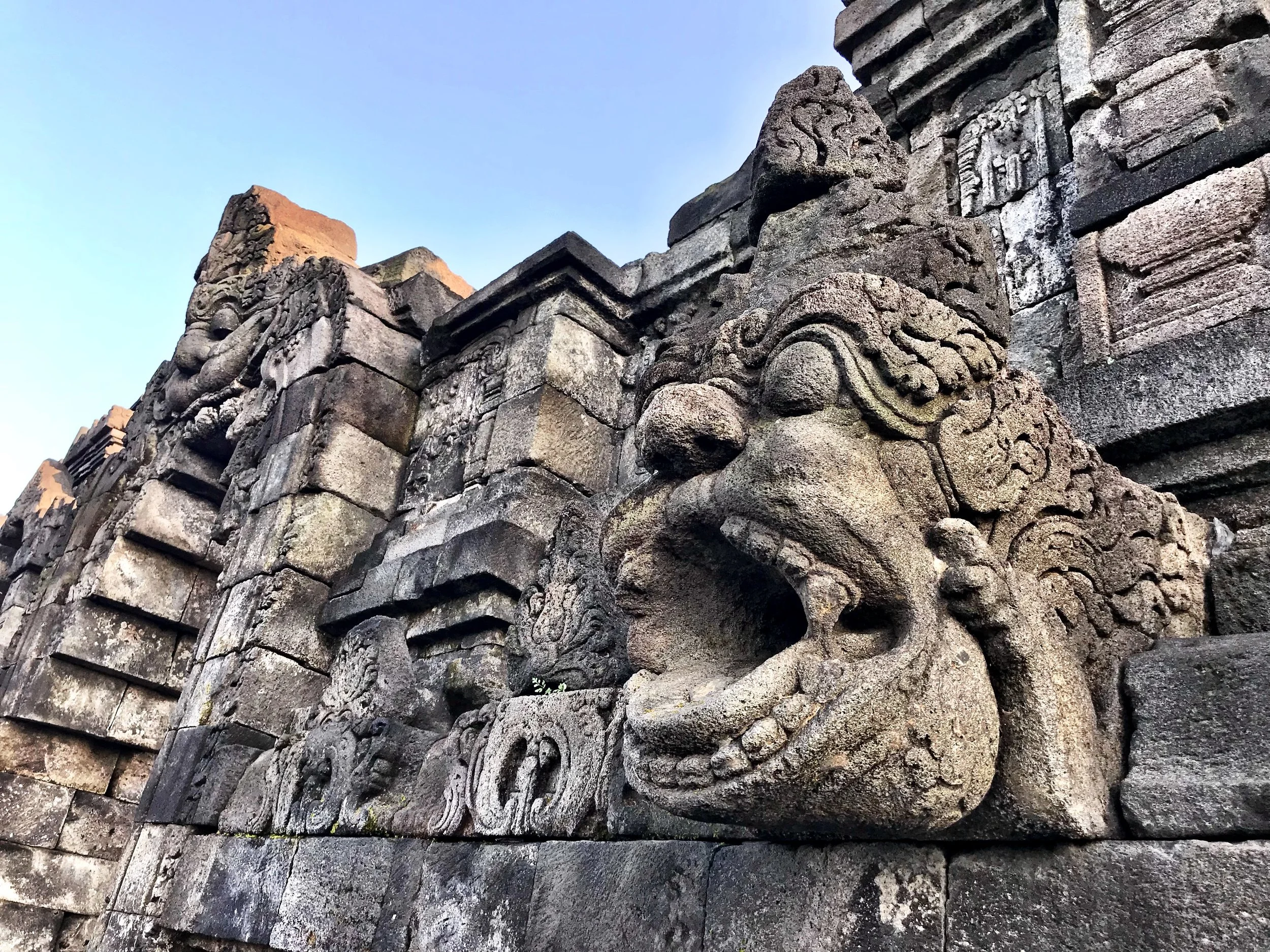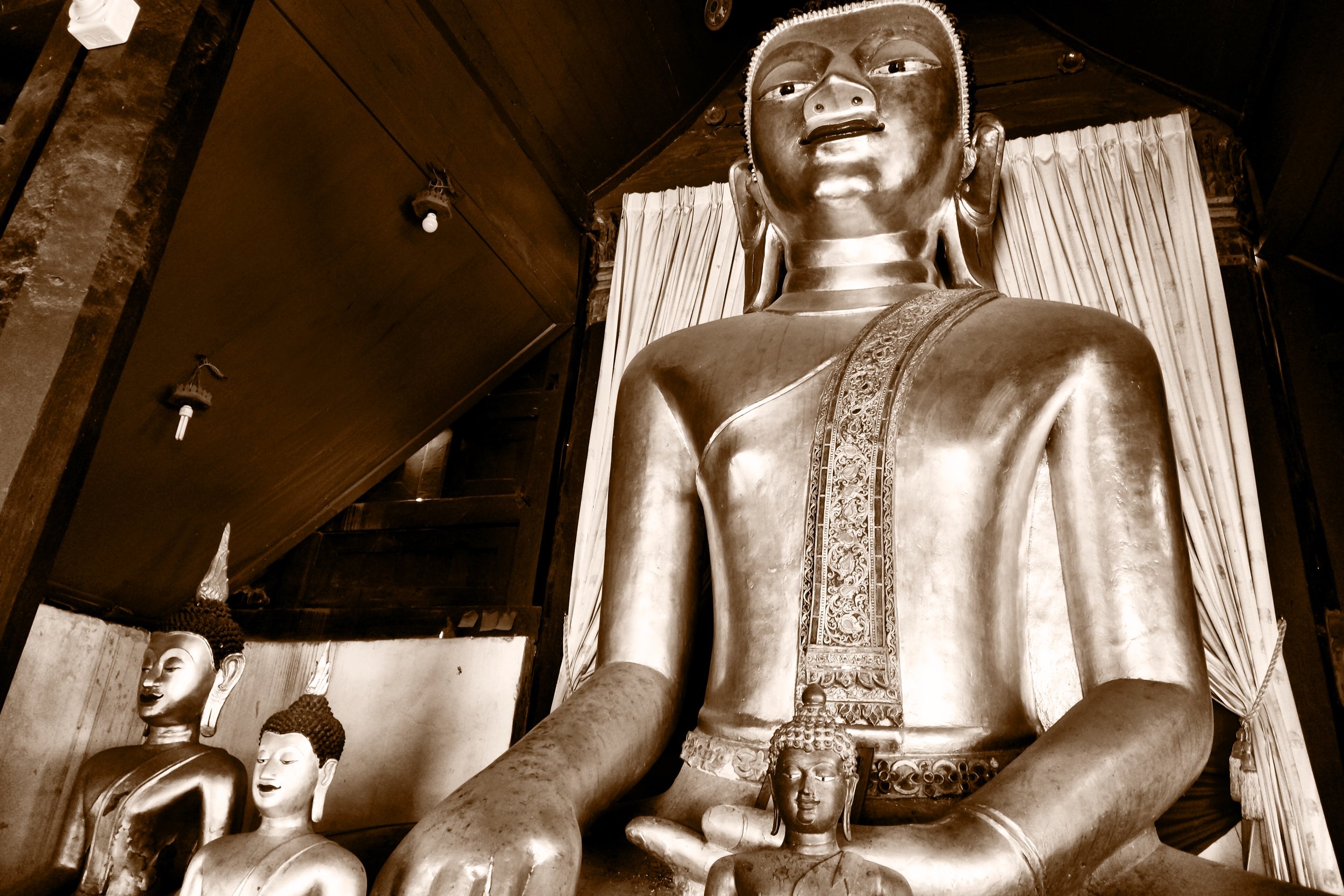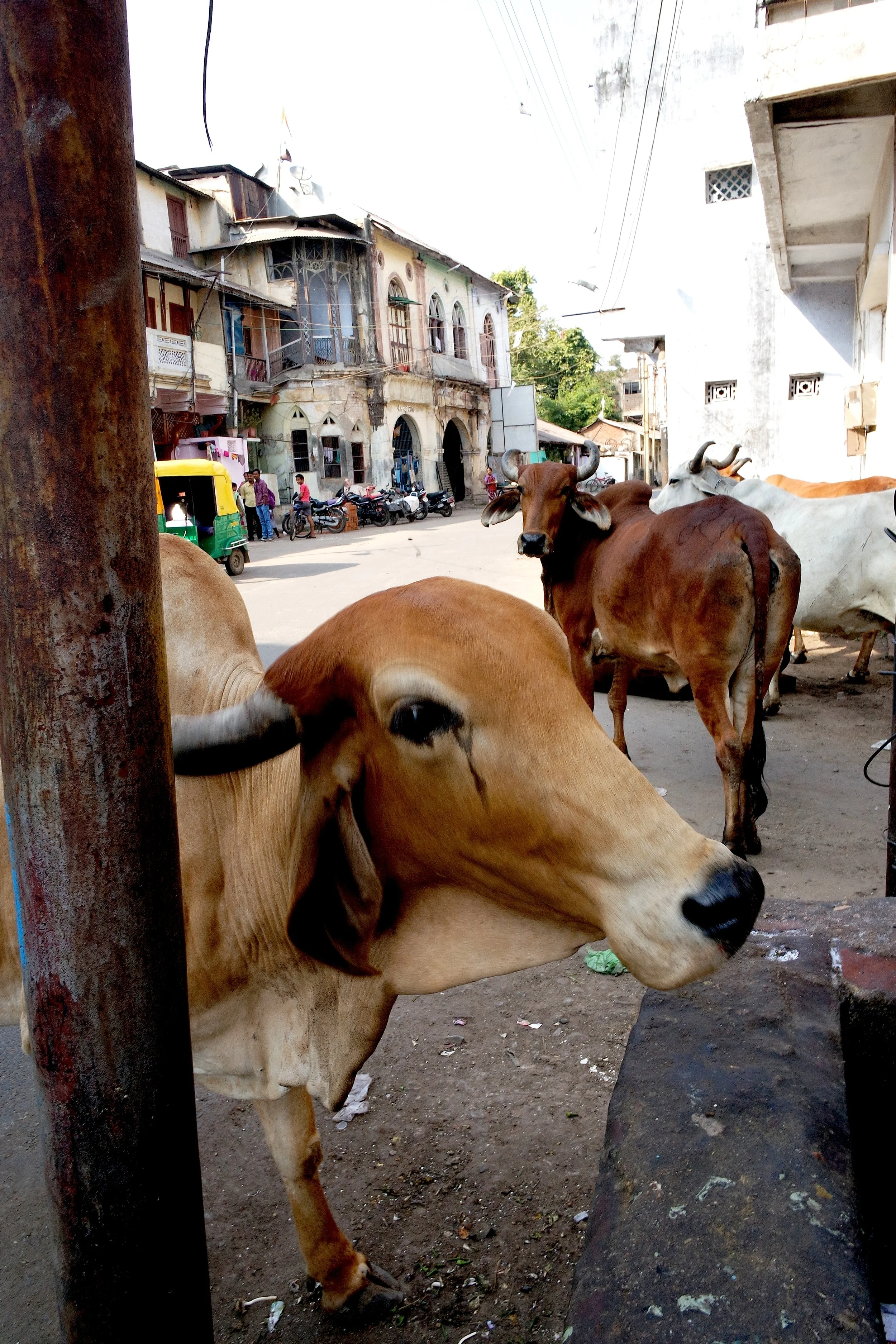What to expect and how to behave in a Thai temple — and why we prefer them to Christian churches.
Thai temples, like Wat Ket Karam in Chiang Mai, have worship halls (viharns), towers containing relics (chedis) and a mix of other buildings
The first time you step into a Thai Buddhist temple as a Westerner, you might get overwhelmed. Temples in Thailand are called wats — but they’re not a single building, as you might imagine.
They’re actually entire complexes with multiple buildings, each a mélange of various styles. Faded carved teak, lichen-covered stone, glittering gold and green and red, gaudy ceramics, serene Buddhas, Chinese zodiac iconography, Hindu deities and bizarre hybrid creatures from mythology — they’re all jumbled about.
“Women aren’t allowed to touch monks, and there are parts of certain wats where females are forbidden to enter. ”
And while I do love to visit a Zen garden or a sleek, austere sacred space, I’m truly a maximalist by nature. There’s something cozy and comforting about the mishmash found in wats. They’re fun to explore — you never know what lies around the next corner. You might even be startled by a wax figure of a famous monk that’s creepily lifelike.
No, this isn’t a real monk — it’s a wax replica at Wat Phra Sing that could fit right in at Madame Tussauds. Wax monks are all the rage in Northern Thailand, and they’re sure to startle the unwary traveler
We recommend adopting this open-minded attitude if you’re visiting Chiang Mai. It’s a city filled with quirky and often beautiful wats, and wandering through them should be a part of every tourist’s agenda.
Duke and I probably enjoy wats more than your average travelers — we visited at least 12 in our week in Northern Thailand. More than churches, they’re all unique in their own way.
Follow the Rules
If you’re worried about how to behave in a wat, don’t be. I remember the first time I went to Thailand I was scared I’d do something wrong. I closely watched native worshippers, hoping to mimic their actions.
The good news is that, aside from some universal rules, there is no wrong way to pay your respects to the Buddha.
Follow these three simple rules when you’re in a wat:
1. Take off your shoes.
It’s good to have shoes or sandals you can easily slip on and off — you’ll be doing it multiple times in a wat complex.
2. Cover your shoulders and knees.
Some temples are more strict than others, though most in Chiang Mai are quite lax. If they’re strict about dress code, it often only pertains to women and they’ll have wraps you can borrow. (There’s a strain of sexism that runs through the country, where every man goes off to become a monk for a period of time, and many women enter the sex industry. Women aren’t allowed to touch monks, and there are parts of certain wats where females are forbidden to enter. With the exception of the amazing Wat Sri Suphan, the Silver Temple, most of the time these spots aren’t too remarkable, so you’re not really missing out on too much, ladies.)
3. Don’t point your feet at the Buddha.
The easiest way to avoid this is to never sit with your feet in front of you. Instead, play it safe and kneel, or sit cross-legged.
Otherwise you’re free to wander around at will and worship as you see fit.
Sorry, ladies. Only men can feast their eyes on the interior of Wat Sri Suphan, the amazing Silver Temple in Chiang Mai
What Should Tourists Do in a Wat?
The main temple, known as a viharn, has an open hall that faces at least one — but usually many — often giant, depiction of the Buddha. They’re places for quiet prayers and contemplation. I could certainly benefit from more meditation. Or, heck, let’s face it: any mediation. These are the most like churches. You probably want to speak in quiet, reverent tones so as not to disturb worshippers.
As I mentioned, there’s no wrong way to pray in a wat. I like to kneel down, maybe extending my arms out in a bow. Then I do a wai, the Thai sign of respect, with your palms pressed together in front of your face. I bow three times and then sit there, still waiing, and have a little chat with the Buddha, like you might with God or Allah. If there’s something you’d like, ask for it. Give thanks for something. Or just sit still and try to clear your mind.
By the way, I don’t do this in every viharn I go in — only those that have a special feel that calls to me. Otherwise, I just walk around and take pictures.
Another appeal of Thai Buddhism is that outside of these solemn structures, wats are a thriving part of the community. Some have massage schools and offer rub-downs for an affordable price. Some have open-air food courts; with others, handicraft markets spill onto their grounds. The line between sacred and social blurs.
As religion in the U.S. fades, with atheism on the rise, it’s interesting to experience a culture where it seems almost everyone is religious. Perhaps it’s because Buddhist worship seems pretty chill. You go to the temple whenever, you spend as much or as little time as you want, maybe you make a small donation to light a candle or ring a bell. There might be times when monks chant, but it’s not like a church service that’s so regimented.
Honestly, wouldn’t you rather pray to this peaceful man than to one who’s being tortured to death?
If we lived in a place where Buddhist temples were as common as churches, I would pop into them every so often, spend 10 to 30 minutes praying, meditating or walking around the chedi.
I suppose it’s not that different than the people who go into a church to pray.
I guess I just prefer looking at a serenely smiling man to one nailed to a cross in agony.
Can you tell? I’ve fallen for Buddhism. –Wally

